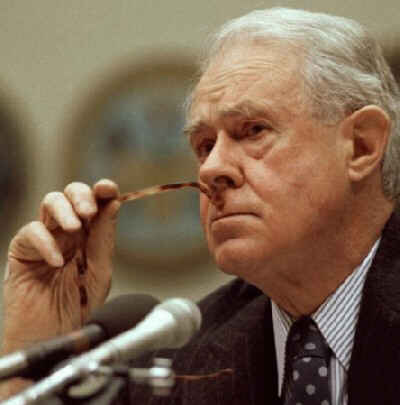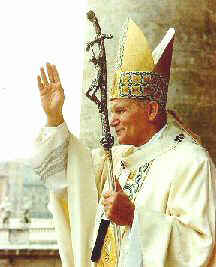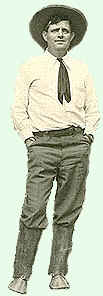 Deaths
which occurred on a January 12: Deaths
which occurred on a January 12:
2003 Eli
Biton, 48, Israeli, and two gunmen of the Jerusalem
Brigades of Islamic Jihad who penetrate in Moshav Gadish, near Afula at
19:00, and shoot at cars on its main road, then one is run over by the vehicle
of a Border Police commander and the other killed in a gunfight with security
forces. One civilian man and 4 members of the Israeli security forces are
wounded.
2003 An Israeli, and two gunmen of the three
who shoot at him at 19:00, after crossing the border from Egypt into the
Negev, near Nitzana, and are later killed by Israeli soldiers.
2003
Mohammed Kawara, 14, and Abdullah a-Najar, 19, peaceful Palestinian
boys, by missiles fired from an Israeli helicopter at an orchard near a
hospital in southeast Khan Younis, which were intended for Hamas militants
Raed al-Atar (or al-Bashar) and Mohammed Abu Shamallah (or Shali), who were
at the scene in a car but, shielded from the first missile by a tree, managed
to escape. A harmless 15-year-old Palestinian is wounded. The Reuters body
count of the al-Aqsa intifada reaches “at least” 1779 Palestinians
and 695 Israelis.
2003 Hazem Fanoun, 35, Palestinian
who was delivering bread from his family's bakeries, as he was turning into
Beit Kahal from the Tarqumiya-Hebron road, shot from 200 meters by Israeli
civilian guards of an oil truck, which had been fired upon by Palestinians.
2003 Ziad Halil Dafi, 17, Palestinian of Islamic Jihad,
by the explosion of a bomb he was preparing in his home in the Gaza Strip.
2002 Cyrus R. Vance Sr., 84, Alzheirmer's patient, US secretary
of state in the Carter administration, who resigned in opposition to an
ill-conceived attempt to rescue hostages from Iran. [photo >]
Heading the State Department was the highlight of Vance's career, but his
duties on behalf of presidents, the Congress and the United Nations spanned
more than three decades. He used his peacemaking skills to ease conflicts
in foreign lands, racially torn US cities and even corporate boardrooms.
He played a key role in normalizing relations with China, winning approval
for new Panama Canal treaties and helping negotiate the Camp David treaty
between Egypt and Israel. But Vance's tenure also saw an expansion of Soviet
influence in a number of areas, as well as the collapse of the pro-US monarchy
in Iran and the seizure of US hostages in Tehran. When Carter approved a
military operation for the rescue of the hostages in April 1980, Vance resigned.
He was right: the operation ended in disaster. Eight US servicemen died
when a Marine Corps helicopter crashed into a plane parked at a clandestine
refueling site in Iran. The 52 hostages became an issue in the 1980 presidential
campaign and were held for 444 days before their release on Ronald Reagan's
inauguration day, 20 January 1985.
One of Vance's most difficult diplomatic undertakings took place long after
he left the State Department, when U.N. Secretary General Javier Perez de
Cuellar asked him in 1991 to try to end the war in the former Yugoslavia.
He helped achieve a cease fire in Croatia but peace eluded him in Bosnia.
His strategy in Bosnia was the subject of considerable controversy. Vance
felt strongly that negotiations were the only way to halt Serbian advances,
rejecting critics who argued that his tactics amounted to appeasement of
an aggressor. He quit in despair after struggling with the Bosnian conflict
for almost a year.
Soon he plunged
into peacemaking: between rival creditors of a debt-ridden commercial real
estate firm with extensive holdings in New York City. Vance helped the parties
reach a settlement in July 1993. Vance retired several years later, when
Alzheimer's disease began to curtail his activities
Cyrus Roberts Vance was born in Clarksburg WV, on 27 March 1917. After graduating
with honors from Yale Law School in 1942, he entered the US Navy, serving
as a gunnery officer in the Pacific during World War II. A year after his
discharge from the Navy in 1946, he married Grace Elsie Sloane, of a prominent
family specializing in home furnishings. He joined the New York law firm
of Simpson, Thatcher and Bartlett, with which he maintained a relationship
for decades. Vance entered civilian government service for the first time
in 1957 when he served as special counsel for Senate Armed Service subcommittee
on preparedness. Vance became general counsel for the Defense Department
in 1961 during the Kennedy administration, working closely with then-Defense
Secretary Robert McNamara. He was appointed secretary of the Army in 1962,
and in January 1964 President Johnson named him deputy secretary of defense.
He became known in that role for his hawkish views on Vietnam. During his
three years of service as the No. 2 figure at the Pentagon, Vance was dispatched
by the White House on trouble shooting missions to Panama and the Dominican
Republic.
Vance left the Defense Department
for health reasons in June 1967 but agreed at Johnson's request to go to
Detroit to help assess the cause of race riots in the city. By November
1967, he was leading a negotiating effort that helped head off a war between
Greece and Turkey over Cyprus. Over the next few months, he went on a peacekeeping
mission to Korea and helped develop a peace-keeping plan for Washington
D.C. following the death of Dr. Martin Luther King Jr. During the last nine
months of the Johnson presidency, Vance served as deputy chief of the US
delegation to the Paris peace talks.
In 1975, Vance and social scientist Daniel Yankelovich founded Public Agenda,
a nonpartisan, nonprofit public opinion research and citizen education organization
based in New York City.
2002 Five Russian aggressors in Chechnya.
Russia sent bombers and helicopters in aerial assaults against rebels in
Chechnya, pressing a campaign that has drawn renewed US allegations of rights
violations - and a sharp Kremlin retort to the American claims. An official
in Chechnya's Moscow-backed administration said today that Russian aircraft
bombed two areas in the breakaway republic over the previous 24 hours, while
helicopters struck another region and artillery was used elsewhere. Five
Russian soldiers and police officers were killed and five wounded in fighting
or land-mine explosions, the official said, speaking on condition of anonymity.
He said more than 100 suspected rebels were detained in security sweeps.
On 10 January 2002 Russian troops lifted a blockade of Chechnya's third-largest
city, Argun, following a roundup of suspected rebels that prompted clashes
and protests by residents who claimed they were abused by Russian troops.
In Washington on 10 Jan 2002, State Department spokesman Richard Boucher
said, "The latest information on Russian operations in Chechnya indicates
a continuation of human rights violations and the use of overwhelming force
against civilian targets." He also said Moscow had failed to pursue contacts
with Chechen separatists to reach a peaceful settlement to the conflict.
In a Kremlin information office statement carried by the ITAR-Tass news
agency late on 11 Jan 2002, Russian President Vladimir Putin's administration
rejected Boucher's remarks and said it regretted the tone of his statement.
The ITAR-Tass report also quoted the chief prosecutor and the prime minister
in the Moscow-backed government of Chechnya as saying no human rights abuses
occurred during the Russian operations in Argun.
2002 Mohammed
Shafique, 17, in Abbaspur near Rawalakot, about 150 km south of
Muzaffarabad, Pakistan, as Pakistani and Indian troops massed along the
disputed border in Kashmir exchange artillery and mortar fire. A 10-year-old
boy is wounded.
2001 William Hewlett, 87, in Palo
Alto, co-founder (with David Packard) of Hewlett-Packard Company in a garage
on 01 January 1939. At his death, with $9 billion, he was the 26th wealthiest
person in the US..
1996 van
der Waerden, mathematician.
1993 A US Marine
taking part in the humanitarian relief mission in Somalia is killed; the
same day, members of Congress called for a withdrawal of some US forces.
1976 Agatha Christie, 85, English mystery writer
(10 Little Indians)
1965 Porcupine, 27, in Washington
DC zoo; oldest known rodent
1954 Austria's worst avalanche
— kills 200; 9 hours later 2nd one — kills 115 .
1945 41 Japanese ships, destroyed by US Task Force 38 in Battle
of South China Sea
1943 Jan R T Campert, 40, Dutch
resistance fighter/poet (18 Dead)
1940 Day 44 of Winter War: USSR
aggression against Finland.
More deaths due to Stalin's desire to grab Finnish territory.
Soviet troops trapped at Kitelä — Day 42 of the Winter
War, January 10, 1939
Northern
Finland: the Russian 122nd division at Salla begins to
retreat towards Märkäjärvi.
Ladoga Karelia: the vanguard
of the Finnish IV Army Corps cuts the road connections of
the Russian 56th Army in the area of Pitkäranta.
The bulk of the Soviet's 56th
Army are trapped inside the Kitelä-Syskyjärvi-Koirinoja triangle,
giving rise to the great Kitelä 'motti'.
The author Hella Wuolijoki travels
to Stockholm for unofficial negotiations
with Alexandra Kollontai, the Soviet Ambassador in Stockholm.
The German war correspondent
Otto von Zwehl enlists as a volunteer in the Finnish Army.
Hitler hears of this and strips him of his German citizenship and
military rank.
Mabel Bonney, correspondent and photographer
for Life magazine, arrives in Finland.
Neuvostojoukot jäävät mottiin Kitelässä
Talvisodan 42. päivä, 10.tammikuuta.1940
Sallassa
venäläinen 122. Divisioona aloittaa vetäytymisensä Märkäjärvelle.
IV Armeijakunnan hyökkäyskärki
katkaisee venäläisen 56. Armeijakunnan tieyhteydet Pitkärannan alueelle.
Neuvostojoukot jäävät mottiin
Kitelässä: vihollisen armeijakunnan pääosat saarretaan Kitelän-Syskyjärven-Koirinojan
kolmioon. Kitelän suurmotti syntyy.
Kirjailija Hella Wuolijoki matkustaa Tukholmaan neuvotellakseen epävirallisesti
Neuvostoliiton Tukholman suurlähettilään Aleksandra Kollontain kanssa.
Saksalainen sotakirjeenvaihtaja
Otto von Zwehl siirtyy vapaaehtoisena Suomen armeijan palvelukseen.
Hitler kuulee kirjeenvaihtajan tempauksesta ja riistää mieheltä Saksan
kansalaisuuden ja sotilasarvon.
Amerikkalaisen Life-lehden kirjeenvaihtaja ja kuvaaja Mabel Bonney
saapuu Suomeen. |
1938 Oscar Florianus Bluemner, suicide, German US painter
born on 21 June 1867. . — MORE
ON BLUEMNER AT ART “4” JANUARY
with links to images.
1933: 25 people, in
uprising of Guardia Civil in Spain.
1931 Giovanni Boldini,
Italian painter born on 31 December 1842. — MORE
ON BOLDINI AT ART “4” JANUARY with
links to images.
1912 Johannes Hermanus Barend Koekkoek,
Dutch painter born on 06 July 1840, dies on the 61st anniversary of the
death of his grandfather (see below). — more
with links to images.
1909 Hermann
Minkowski, of a ruptured appendix, Lithuania-born (22 June
1864) German mathematician. He developed a new view of space and time and
laid the mathematical foundation of the theory of relativity.
1897 Sir Isaac Pitman, English educator and inventor of shorthand,
born on 04 anuary 1813.
1891 Gioacchino Toma, Italian
artist born on 24 January 1836. — more
with links to the story and images of a woman who was decapitated in 1800
by monarchists for having leaked their plot against the Republic of Naples.
1888 Charles Edouard de Beaumont, French artist born in
1812.
1852 Gioacchino Giuseppe Serangeli, French
(?!) artist born in 1768.
1851 Johannes Hermanus Koekkoek,
Dutch marine painter born on 17 August 1778, founder of a dynasty of at
least 16 painters. — MORE
ON KOEKKOEK AT ART “4” JANUARY
with links to images.
1839 Joseph Anton Koch,
Austrian painter born on 27 July 1768. — links
to images.
1819 Pieter Gaal, Dutch artist born in
1785.
1717 Kaspar Jasper van Opstal, Flemish artist
born on 02 July 1654, 1655, or 1656.
| 1665 Pierre de Fermat,
63, French lawyer / mathematician who is often called the founder
of the modern theory of numbers. Together with René Descartes, Fermat
was one of the two leading mathematicians of the first half of the
17th century. Independently of Descartes, Fermat
discovered the fundamental principle of analytic geometry. His methods
for finding tangents to curves and their maximum and minimum points
led him to be regarded as the inventor of the differential calculus.
Through his correspondence with Blaise Pascal he was a co-founder
of the theory of probability. |
1519 Maximilian I of Hapsburg, Holy Roman Emperor
1517 Admiral Vasco Núñez de Balboa, 41,
Spanish conquistador, beheaded. |
 1995
Pope John
Paul II begins visit to Southeast Asia
1995
Pope John
Paul II begins visit to Southeast Asia  Deaths
Deaths 1876 John Griffith Chaney, who would be
1876 John Griffith Chaney, who would be